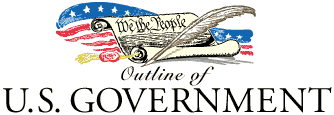
As the head of the executive branch of the government, the President must carry out the government programmes. He is the commander-in-chief of the armed forces of the United States. The President has the authority to appoint the heads of all executive departments and agencies, together with other high-ranking officials, including judges, from the district court level to the US Supreme Court. But each appointment must be approved by the Senate.
Under the Constitution the President is responsible for foreign relations with other nations. With the Secretary of State, the President manages all official contacts with foreign governments, concludes treaties with other countries. Such treaties must be approved by a two-thirds votes of the Senate.
Everyday work of the government is carried out by different executive departments, created by the Congress. The heads of these departments, chosen by the President and approved by the Senate, form the Cabinet. Today these 14 departments are: State, Treasury, Defence, Justice, Interior, Agriculture, Commerce, Labour, Health and Human Services, Housing and Urban Development, Transportation, Energy, Education, Veterans Affairs.
In addition to the executive departments, there are over fifty agencies in the Federal Government, the heads of which are directly responsible to the President.
In 1947 the National Security Council (NSC) was formed, which includes the President, the Vice President, the Secretaries of State and Defence. It is the main centre of planning the American foreign and military policy.
 |
Executive Branch |
 |
|